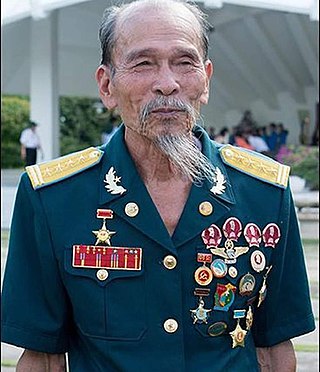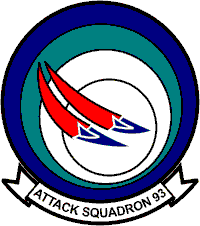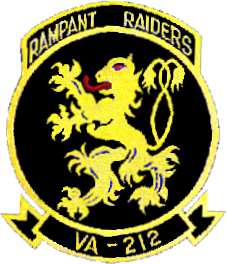Part of the Vietnam War (1965)
| Operation Flaming Dart | |||||||
|---|---|---|---|---|---|---|---|
| Part of the Vietnam War | |||||||
| |||||||
| Belligerents | |||||||
| Commanders and leaders | |||||||
| | | ||||||
Operation Flaming Dart was a U.S. and South Vietnamese military operation, conducted in two parts, during the Vietnam War.
| Operation Flaming Dart | |||||||
|---|---|---|---|---|---|---|---|
| Part of the Vietnam War | |||||||
| |||||||
| Belligerents | |||||||
| Commanders and leaders | |||||||
| | | ||||||
Operation Flaming Dart was a U.S. and South Vietnamese military operation, conducted in two parts, during the Vietnam War.
United States President Lyndon B. Johnson in February 1965 ordered a series of reprisal air strikes after several attacks on U.S. bases by Vietcong units, particularly in reply to the Viet Cong Attack on Camp Holloway. [1] : 58
Forty-nine retaliatory sorties were flown for Flaming Dart I on 7 February 1965. Flaming Dart I targeted North Vietnamese army bases near Đồng Hới, while the second wave targeted Vietcong logistics and communications near the Vietnamese Demilitarized Zone (DMZ). Among the pilots was Republic of Vietnam Air Force (RVNAF) Air Marshal Nguyễn Cao Kỳ, then a member of Vietnam's ruling junta. [1] : 58
U.S. Navy aircraft carriers launched aircraft for strikes on the barracks at Vit Thu Lu and Đồng Hới, both just north of the DMZ. The attack on Vit Thu Lu was cancelled because of heavy clouds over the target. The weather was little better at Dong Hoi, home of the People's Army of Vietnam (PAVN) 325th Infantry Division. A 29-plane strike formation from USS Coral Sea approached the target under a low cloud ceiling at 500 knots. The A-4 Skyhawks of attack squadrons VA-153 and VA-155 hit the barracks with rockets and 250-pound bombs. Prepared as they had not been during Operation Pierce Arrow, North Vietnamese antiaircraft gunners threw up a curtain of fire from 37-millimeter guns, automatic weapons and small arms ashore and from Swatow gunboats in the Kien River. Some of this fire hit Lieutenant Edward A. Dickson's A-4 but he continued his attack before ejecting from his crippled plane, however his parachute failed to open and he plunged to his death. Right behind Coral Seas formation came 17 A-4s of VA-212 and VA-216 from the USS Hancock which dropped their ordnance on already burning and smoking camp facilities as F-8 Crusaders suppressed fire from antiaircraft sites. Completing the mission, RF-8A reconnaissance aircraft rolled in to photograph the scene for naval intelligence analysis. The results were unimpressive. The attack had destroyed or damaged only 22 of the 275 buildings in the camp. [2] : 81

In reaction to Flaming Dart the Vietcong attacked a hotel billeting U.S. personnel in Qui Nhơn, prompting the Flaming Dart II airstrikes on 11 February 1965. The U.S. Navy launched 99 fighter-bombers from three carriers: Hancock, Coral Sea and USS Ranger. The A-1 Skyraiders and A-4s from the carriers delivered tons of bombs and rockets to the target area at Chanh Hoa as F-8E Crusaders and F-4B Phantoms rocketed and strafed antiaircraft positions. A total of 33 F-8s, F-4s and A-1s protected the attack force should North Vietnamese MiGs based near Hanoi challenge the mission. Although MiGs did not interfere with the operation, antiaircraft gunners damaged a Coral Sea A-4C, forcing the pilot to make an emergency landing at Da Nang Air Base. Unused bombs still positioned on the wings exploded when the pilot landed at Danang, destroying the aircraft; the pilot survived. Lieutenant Commander Robert H. Shumaker of VF-154 ejected from his stricken F-8 over Chanh Hoa where he was captured by PAVN troops. [2] : 81–2
While the naval aircraft bombed Chanh Hoa, the RVNAF and the U.S. Air Force (USAF) attacked Chap Le. The RVNAF used 28 propeller-driven A-1s, while the USAF had an equal number of jet-powered F-100 Super Sabres on target. While Americans with Farm Gate had been flying combat with their South Vietnamese counterparts, the USAF strikes in South Vietnam escalated the war by their use of jet aircraft. [1] : 58–9
American reaction to Communist escalation was not restricted to the bombing of North Vietnam. Washington also escalated its use of air power when it authorized the use of U.S. jet attack aircraft to engage targets in the south. On 19 February 1965, USAF B-57s conducted the first jet strikes flown by Americans in support of South Vietnamese ground units. On 24 February 1965, USAF jets struck again, this time breaking up a Viet Cong ambush in the Central Highlands with a massive series of tactical air sorties. Again, this was an escalation in the U.S. use of air power. [1] : 59
The Operation Flaming Dart raids were later followed by Operation Rolling Thunder, which began a 44-month campaign on 2 March 1965. [1] : 59 Other aerial campaigns were also waged during the war. By war's end, the American bombing campaigns during the Vietnam War amounted to the heaviest aerial bombardment in history, totaling 7,662,000 tons of ordnance. [1] : 225

The Douglas A-1 Skyraider is an American single-seat attack aircraft in service from 1946 to the early 1980s, which served during the Korean War and Vietnam War. The Skyraider had an unusually long career, remaining in frontline service well into the Jet Age ; thus becoming known by some as an "anachronism". The aircraft was nicknamed "Spad", after the French World War I fighter.

Operation Rolling Thunder was a gradual and sustained aerial bombardment campaign conducted by the United States (U.S.) 2nd Air Division, U.S. Navy, and Republic of Vietnam Air Force (RVNAF) against North Vietnam from 2 March 1965 until 2 November 1968, during the Vietnam War.

Operation Linebacker was the codename of a U.S. Seventh Air Force and U.S. Navy Task Force 77 air interdiction campaign conducted against North Vietnam from 9 May to 23 October 1972, during the Vietnam War.

Bien Hoa Air Base is a Vietnam People's Air Force (VPAF) military airfield located in South-Central southern Vietnam about 25 km from Ho Chi Minh City, across the Dong Nai river in the northern ward of Tân Phong, and within the city of Biên Hòa within Đồng Nai Province. The boomburb city is densely populated and rings the base, despite significant levels of Agent Orange toxins simply left there for decades. Cleanup and remediation began in 2019.

Phan Rang Air Base is a Vietnam People's Air Force (VPAF) (Khong Quan Nhan Dan Viet Nam) military airfield in Vietnam. It is located 5.2 miles north-northwest of Phan Rang – Tháp Chàm in Ninh Thuận Province.

Tan Son Nhut Air Base (1955–1975) was a Republic of Vietnam Air Force (RVNAF) facility. It was located near the city of Saigon in southern Vietnam. The United States used it as a major base during the Vietnam War (1959–1975), stationing Army, Air Force, Navy, and Marine units there. Following the Fall of Saigon, it was taken over as a Vietnam People's Air Force (VPAF) facility and remains in use today.

Strike Fighter Squadron 94 (VFA-94), also known as the Mighty Shrikes, is a United States Navy fighter squadron stationed at Naval Air Station Lemoore. It is an operational fleet squadron currently flying the F/A-18E Super Hornet. It is attached to Carrier Air Wing 17 and based at NAS Lemoore, California. Its tail code is "NA" and its radio call sign is "Hobo".

The South Vietnam Air Force, officially the Republic of Vietnam Air Force, was the aerial branch of the Republic of Vietnam Military Forces, the official military of the Republic of Vietnam from 1955 to 1975.

Da Nang Air Base (1930s–1975) was a French Air Force and later Republic of Vietnam Air Force (RVNAF) facility located in the city of Da Nang, Vietnam. During the Vietnam War (1959–1975), it was a major base with United States Army, United States Air Force (USAF), and United States Marine Corps (USMC) units stationed there. Air Vietnam also used the facility from 1951 to 1975 for civilian domestic and international flights within Southeast Asia.
The Thanh Hóa Bridge, spanning the Song Ma river, is situated 3 miles (4.8 km) northeast of Thanh Hóa, the capital of Thanh Hóa Province in Vietnam. The Vietnamese gave it the nickname Hàm Rồng. In 1965 during the Vietnam War, it was the objective of many attacks by US Air Force and US Navy aircraft which would fail to destroy the bridge until 1972, even after hundreds of attacks. The bridge was restored in 1973. As of 2016, the bridge still stands.

The attack on Camp Holloway occurred during the early hours of February 7, 1965, in the early stages of the Vietnam War. Camp Holloway was a helicopter facility constructed by the United States Army near Pleiku in 1962. It was built to support the operations of Free World Military Forces in the Central Highlands of South Vietnam.

Nguyễn Văn Bảy, was a Vietnamese jet fighter ace for the Vietnam People's Air Force during the Vietnam War. Piloting a MiG-17F while assigned to the 923rd Fighter Regiment, Bay claimed 7 aerial combat victories while engaged against aircraft of the USAF and USN: 2 F-8s, 1 F-4B, 1 A-4C and 1 F-105D. Of the 7 claimed victories, 5 are acknowledged by American documents. Of 16 VPAF aces during Vietnam War, only Bay, Luu Huy Chao, and Le Hai solely flew MiG-17s.

1972 in the Vietnam War saw foreign involvement in South Vietnam slowly declining. Three allies, Australia, New Zealand and Thailand, which had each contributed military contingents, left South Vietnam this year. The United States continued to participate in combat, primarily with air power to assist the South Vietnamese, while negotiators in Paris tried to hammer out a peace agreement and withdrawal strategy for the United States.

The Vietnam People's Air Force, officially the Air Defence - Air Force Service or the Vietnam Air Force, is the aerial and air defence service branch of Vietnam. It is the modern incarnation of the so-called North Vietnamese Air Force (NVAF) and absorbed the South Vietnamese Air Force (RVNAF/VNAF) following the reunification of Vietnam in 1975 and is one of three main branches of the People's Army of Vietnam, which is under the executive administration of the Ministry of National Defence. The main mission of the VPAF is the defence of Vietnamese aerospace and the provision of air and space cover for operations of the People's Army of Vietnam.

The Bombing of Tan Son Nhut Air Base occurred on April 28, 1975, just two days before the Fall of Saigon. The bombing operation was carried out by the Vietnam People's Air Force (VPAF) Quyet Thang Squadron, using captured Republic of Vietnam Air Force (RVNAF) A-37 Dragonfly aircraft flown by VPAF pilots and RVNAF defectors led by Nguyen Thanh Trung who had bombed the Presidential Palace in Saigon on 8 April 1975.

VA-93 was an Attack Squadron of the U.S. Navy. It was established as Fighter Squadron VF-93 on 26 March 1952, and redesignated as VA-93 on 15 September 1956. It was disestablished 30 years later on 31 August 1986. The squadron's nickname was the Blue Blazers from 1954 to 1976 and the Ravens thereafter.

The second VA-95 was an Attack Squadron of the U.S. Navy, and was the second of three unrelated squadrons to bear that designation. It was established on 26 March 1952, and disestablished on 1 April 1970. The squadron's nickname was the Skyknights from 1957 to 1963, and the Green Lizards thereafter.

Attack Squadron 212 (VA-212), nicknamed the Rampant Raiders, was an aviation unit of the United States Navy. It was established as Fighter Squadron 212 (VF-212) on 20 June 1955, and redesignated as VA-212 on 1 April 1956. The squadron was disestablished on 12 December 1975.

VA-216, nicknamed the Black Diamonds, was an Attack Squadron of the US Navy. It was established on 30 March 1955, and disestablished 15 years later on 1 August 1970.

Operation Proud Deep Alpha was a limited aerial bombardment campaign conducted by the United States (U.S.) Seventh Air Force and U.S. Navy against North Vietnam from 26 to 30 December 1971, during the Vietnam War.